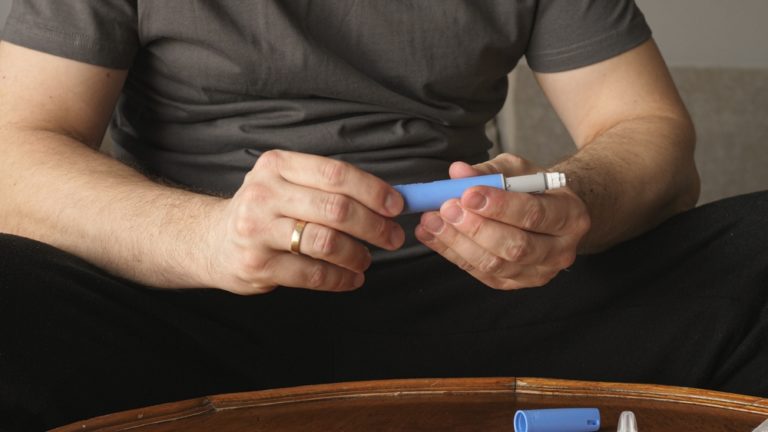Telehealth has been around for some time, but telehealth use has increased 38 times from its pre-pandemic baseline. More patients are realizing the many virtual health benefits. But how do you get started with virtual care?
Telehealth is also used interchangeably with the terms virtual health and telehealth. It is used in a variety of healthcare services, including psychiatry, remote physician services, and diagnostic consultations. However, many people are still unsure how it works and whether to try it.
If you are interested in virtual care services, read on. This telehealth guide covers everything you need to know about the service.
What Is Telehealth?
Telehealth allows you to access healthcare services without attending the facility in person. You usually use an internet connection on a smartphone, laptop, or tablet to connect with your healthcare provider. There are different forms of telehealth, including:
- Talking to a healthcare provider live on video chat or by phone
- Using remote monitoring
- Sending and receiving messages
It depends on the telehealth provider as to how you communicate with them. It is most common to speak on the phone or schedule a video call. Remote monitoring may involve using a device to share your vitals with your doctor and sending messages over a secure platform to keep your data safe.
Who Can Use Telehealth?
Anyone can use telehealth, but there may be some conditions. Questions such as ‘does insurance cover virtual care?’ is subjective to the jurisdiction, service, or healthcare provider.
Walk In requires that you live in British Columbia to access the platform. Your visits are covered if you are under the Medical Services Plan (MSP).
There are also some instances when telehealth may not be possible. Virtual care is common for:
- Sore throats and sinus infections
- Blood tests
- Prescriptions
- Mental health problems
- Skin issues
- Imaging requisitions
- Sexual health
- Travel healthcare
Some medical conditions require a physical examination, in which case virtual care may not be the best option. If you are in an emergency, contact emergency services directly. Some conditions can be monitored with home devices to keep a doctor up to date on your vitals.
Some common conditions that require in-person assessments include:
- Chest pain
- Loss of vision
- Shortness of breath
- Ear pain
- Sudden weakness
- Head injuries
- Any situations that need emergency attention
Currently, 46% of Canadians prefer a virtual care appointment with their doctor as the first point of contact. However, there are some instances where you need to take immediate action and find in-person support. After your first appointment, you may be able to switch to virtual care follow-ups.
Telehealth Benefits
There is a reason telehealth use continues to grow, despite it now being easier to attend appointments in person. There are many benefits for both patients and doctors. Here are some of the top benefits for patients.
Comfort and Convienience
When you are feeling under the weather, the last thing you want is to venture out to the doctor’s office. Telehealth allows you to receive the healthcare you need from the comfort of your own home. You do not have to spend time traveling or waiting around; instead, you can continue your day with ease before and after your appointment.
You also do not need to worry about childcare or finding appointments around your job. You can get the healthcare you need when you need it.
Medical Access
It can be challenging to reach a healthcare provider if you live in a rural area or are without transport. Telehealth makes healthcare more accessible for all who have a working internet connection. Even if there is extreme weather you can rest assured you will get the support you need without putting yourself in more danger.
Specialist Support
One of the top virtual care benefits is that you have more options for healthcare providers. You have access to specialists, such as Cardiologists or Psychiatrists. You can get the targeted care the first time, making telehealth a more efficient treatment option for many healthcare concerns.
Less Stress
Many people do not like visiting healthcare facilities, and it can be extremely difficult for people with phobias such as agoraphobia. Others are worried about catching further sickness, especially if their immune system is low.
Telehealth reduces stress for everyone. You have a straightforward process to book appointments and do not have to travel anywhere. It helps protect you from sickness and others if you are unwell with a transmissible illness.
Cost-savings
You can save money by using telemedicine from the comfort of your own home. It is a more cost-efficient choice, and you do not have to factor in transport fees. Plus, many insurances offer reimbursement, depending on your insurance and healthcare provider.
Chronic Health Support
Medical professionals can also support people with chronic conditions with ease. For example, different at-home monitoring tools can send readings to professionals or alert them to changes in symptoms or conditions. This provides more responsive support for those with long-term conditions and can even be lifesaving.
Telehealthcare providers offer different services, so check what doctors are available and what services are on offer.
How to Arrange a Telehealth Appointment
Firstly, you need to pick your telehealth provider unless it is your current physician. Pick a reputable one that works for your needs.
If you use Walk In, you can arrange an appointment by first registering your information. You are then on the system.
Schedules open 48 hours in advance to book an appointment with a doctor. Keep checking back if no appointments are available. Book your preferred time and then prepare for your appointment.
How to Prepare for a Telehealth Appointment
Some people may be nervous before their first telehealth appointment, as it is a different format from what they know. However, telehealth appointments are similar to walk-in appointments. Follow these telehealth care tips to feel prepared:
- Be ready ten minutes in advance
- Have a list of questions you want to ask
- Have a fully charged smartphone, tablet, or laptop ready
- Download any software needed for the meeting or call
- Use headphones to communicate with ease and privately
- Ensure you have a stable wireless or wired internet connection
- Find a comfortable position to have the appointment
- Try to find a quiet spot and eliminate surrounding noise
- If you use video, have good lighting
- Have a flashlight ready
- Have healthcare information handy
All of these steps will help you have a smooth first telehealth appointment. Your telehealthcare provider may also advise some steps when you book the appointment. If you cannot connect by video, you can arrange a telemedicine phone call.
A flashlight can be helpful if your doctor needs to take a closer look at an issue, such as a sore throat. Good lighting also helps them see conditions such as skin rashes. And finding a quiet space for your appointment ensures you can communicate with ease.
When you register for an appointment, you may have the option to submit some healthcare information. However, if it is your first time meeting a telehealthcare doctor, it can be helpful to have some healthcare information ready. Have a list of any medication and supplements, questions, and any health issues you have.
What to Expect During the Appointment
When you book your telehealth appointment, you will receive instructions to prepare you for the call. First, you have to provide evidence of your identity, such as photo identification.
You might enter a virtual waiting room before connecting with your doctor. During the virtual care visit, the doctor will ask similar questions to what they ask in person. They want to get a better understanding of your condition.
However, they may ask you to show the issue on the camera, such as a skin rash. Or they might ask you to use a light to see a condition.
Your doctor may then write you a prescription if you need one, which they will send directly to the pharmacy. It depends on the pharmacy as to whether you have home delivery or you go to the local pharmacy to pick it up.
You can then ask any questions you have. It can help to prepare questions in advance. However, more might come up during the appointment.
The doctor will also advise if you need a follow-up virtual care appointment. They will also recommend if they think you need urgent support or in-person care for another reason.
Get Started With Virtual Care
This telehealth guide provides all the information you need to understand, prepare, and have virtual care appointments. It is natural to feel nervous the first time, but you will soon realize the many benefits of using a telehealth service.
Not all telemedicine providers are the same, so take the time to find the right one for your needs. Check what they can treat, what doctors work for them, and that they are covered under provincial healthcare plans.
If you are based in British Columbia, Walk In is here to help.
See a Telehealth Doctor Today
Please note:
Walk In does not provide medical advice. The contents of this website, including text, graphics, images and any other material are intended for informational and educational purposes only and are not intended to substitute for professional medical advice, diagnosis or treatment. Although efforts are taken to keep any medical information on the website updated, we cannot guarantee that the information on our website is correct or reflects the most up-to-date medical information.
Please consult your physician for medical advice. Always seek the advice of a physician or other qualified healthcare provider with any questions regarding a medical condition. Never disregard or delay seeking professional medical advice or treatment because of something you have read on this website or on the internet.


